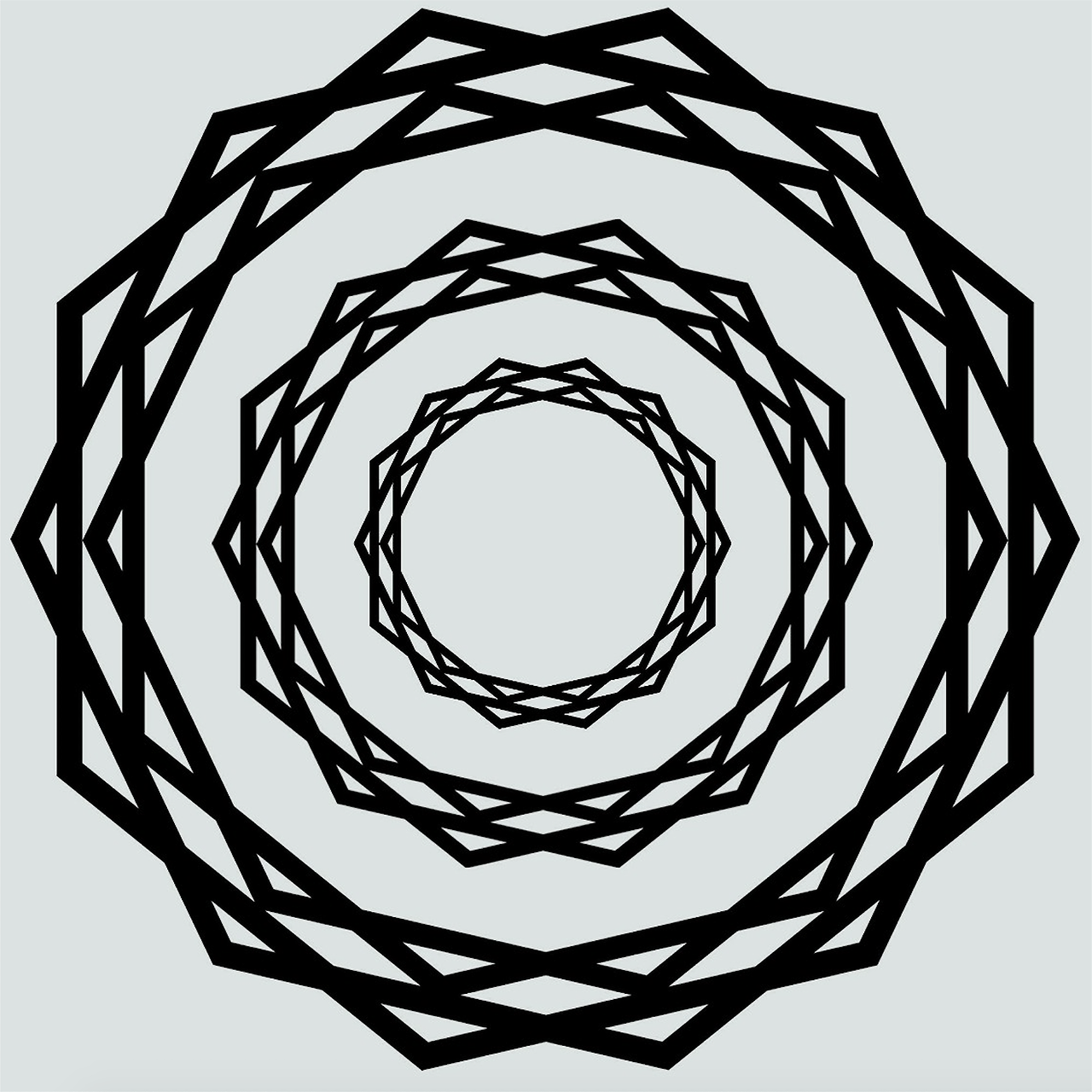Create a free profile to get unlimited access to exclusive videos, sweepstakes, and more!
Trippy new type of optical illusion will have you seeing starbursts, no kaleidoscope needed

Ever looked into a kaleidoscope and seen dazzling starbursts? Now your brain can be tricked into seeing them right on the screen. Those cardboard tubes with seemingly magical morphing shapes inside might be nostalgic, but what designer Michael Karlovich (whose undergraduate degree is actually in neuroscience) discovered is truly mind-blowing.
The Scintillating Starburst illusion is an image of concentric polygons that makes people see nonexistent rays of light forming a starburst, kind of like looking into a kaleidoscope without all the rainbows. The brain connects the spaces between the polygons to make it seem as if beams of light are radiating from them.
Karlovich, who founded art and fashion production company Recursia — and has previously coauthored several scientific papers — recently published his latest study in i-Perception with neuroscientist Pascal Wallisch, who specializes in vision. He set out to create a symbolic logo that he soon realized was turning into something else. That was the effect he ended up naming the Scintillating Starburst.
“I wanted to create a logo that incorporated beauty, order vs. chaos, simplicity vs. complexity, my favorite numbers, 2, 3 and 7, and an illusion that plays with cortical magnification,” Karlovich told SYFY WIRE. “I also wanted a logo that symbolized the notion of interdisciplinary thinking, which is one of the main attributes of my company.”
Your brain can really go on a trip through your eyes. The retinas transmit information to the brain’s visual cortex, the primary area on the outer layer of the cerebrum, which receives that information and then begins integrating and processing it. Cortical magnification means that a certain number of neurons in the visual cortex of the brain are making sense of a visual stimulus, whose size varies depending on where the stimulus is in your field of vision. More neurons will process that stimulus and make it more hi-res the closer it is to the center of the visual field. This explains part of why the Recursia logo is so far out.
As Karlovich gazed at what he had created, he realized he was seeing an optical illusion he had never heard of before. There was no similar effect in any studies he had read. This was when he contacted Wallisch, his neuroscience professor and mentor at NYU, who agreed that nothing like this had ever shown up anywhere. Since no one had described such an effect, Karlovich and Wallisch decided to write a study describing it themselves. There are certain aspects of the Scintillating Starburst that differ from other types of optical illusions.
“There are several illusions that are admittedly superficially similar, but they are all confined to grid-like designs or interference patterns” said Karlovich. “Scintillating Starbursts are categorically different from these illusions. Rays traverse the background of the design and are either darker or lighter than the background, depending on the contrast difference between the color of the design and its background.”
Other illusions also don’t make you think you are seeing lines that actually scintillate. Any lines that grid and interference illusions trick your brain into seeing only run along the grids, and are typically static with none of the perceived sparkle of a Scintillating Starburst. Nothing seems to light up right in front of your eyes. Just like the brightness of actual light can make you blink furiously, light that is imagined can be too much to look at after a while. Stare at Karlovich’s logo long enough, and you’ll start to think you need to hit a light switch somewhere. The strange turn here is that the illusion will also do that for you. The rays seem to vanish and materialize again.
Another reason the Recursia logo seems to shimmer is that the spaces between the polygons that act as cues for your brain to see beams of nonexistant light make the entire image act as a cohesive whole, something seen as more than just the sum of is parts. Karlovich believes the arrangement of these luminance cues makes part of the brain believes that lines are connecting the gaps where you see the light.
“When peripheral vision sees the luminance cues in the wreaths, it assumes there must be a relationship between these points, causing this system to ‘see’ rays,” he said. “When the central gaze of the eye shifts to where the low-resolution system has just detected rays, the high-resolution processing takes over and concludes that there are no rays, leading them to weaken or vanish.”
The rays will reappear as your eyes take another look at the pattern and your peripheral vision goes right back to the same area your central vision told you there were no rays in, and so long as the vicious cycle keeps repeating, those scintillating rays will seem to appear and disappear. This conflict doesn't happen in the brain when you are viewing other types of illusions. Karlovich and Wallisch believe the mental battle is a result of different neural mechanisms going off in the part of the brain that thinks it sees the light and the part that doesn't.
The researchers hope to continue (literally) looking into this to find out what else this new optical illusion could possibly tell us about the inner workings of the human brain.
“The Scintillating Starburst demonstrates how competing and cooperating systems transform information into an experience,” Karlovich said. “It is a useful example of how the brain uses limited input from the senses to reconstruct the physical world as accurately as possible.”


























